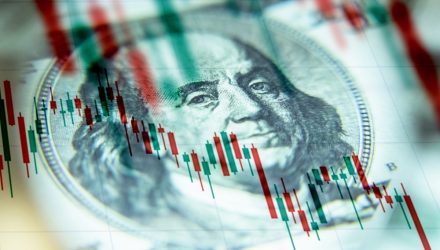With a vaccine looming and a new U.S. president ready for installation in the White House, it might seem that good times are ready to roll again. That might be the case for equities, but the U.S. dollar is struggling. A hedging component is necessary for further drawdowns, and an asset like the Xtrackers MSCI EAFE Hedged Equity ETF (DBEF) is a great place to start.
DBEF seeks investment results that correspond generally to the performance, before fees and expenses, of the MSCI EAFE US Dollar Hedged Index. The fund, using a “passive” or indexing investment approach, seeks investment results that correspond generally to the performance, before fees and expenses, of the underlying index, which is designed to track developed market performance while mitigating exposure to fluctuations between the value of the U.S. dollar and the currencies of the countries included in the underlying index.
DBEF will invest at least 80% of its total assets in component securities of the underlying index. The fund has a net expense ratio of 0.36%.
Economic Fundamentals Are Driving Down the U.S. Dollar
Now that investors are feeling the risky vibes again, they’re allocating more money back into the stock market. For the greenback, this isn’t always a good thing, since the dollar is typically seen as a safe haven currency.
When investors are ready to come out of their safe haven assets, weakness tends to follow. A CNN article noted that the “dollar has weakened by nearly 12% against a basket of top currencies since peaking in March. Last week, it hit its lowest level since April 2018. The last time the greenback was on the skids like this was 2017.”
With a COVID-19 vaccine possibly ready for the masses, confidence in a 2021 global economic rebound is placing downward pressure on the dollar.
“When the US and global economy are performing strongly, the dollar — a safe-haven currency — tends to weaken,” the article said. “Right now, despite rising Covid-19 infections in many parts of the world, investors are putting their confidence in the imminent arrival of safe and effective vaccines, which they predict will create a boom of activity by mid-2021.”
Furthermore, the Federal Reserve’s current plan is to keep rates at bottom-of-the-basement lows.
“The Federal Reserve has made clear it will keep interest rates low and keep printing money for as long as necessary to stimulate the US economy,” the article continued. “That drums up faith in the trajectory of the recovery, feeding so-called “reflation” expectations. It’s also sending investors elsewhere in search of returns, hitting dollar demand at a time of high supply.”
For more news and information, visit the Smart Beta Channel.

